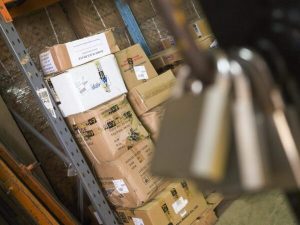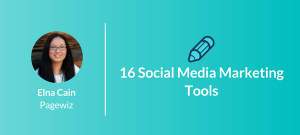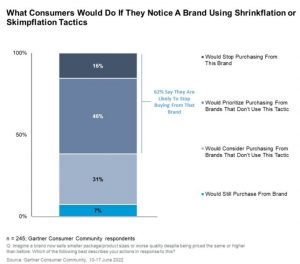— July 26, 2017

AlexanderStein / Pixabay
You may be surprised to hear this, but the majority of businesses that contact us don’t have sustainable business models. You always hear the statistic that 80% of new businesses fail in the first 5 years. Most business actually eat more money than they make, hence the pit of despair title.
There’s a reason for that.
I’m going to tell you a story about a recent client that contacted us that you can use to understand your own business model, or lack there of :). But first, let me give you an easy example:
Apps Are NOT a Business
Everyone wants to make an app. They are not a business.
An app can be a part of your business, but it’s extremely rare that they can be a business in and of themselves. I know this because we do marketing for them.
The average cost it takes to get one person to download a brand new FREE app is $ 3-$ 5 running online campaigns. That’s right. To get people to download your free app, you’ll need to cough up $ 3-$ 5 per user.
Now, how many of those people that download, will actually use the app? Maybe 30%. And how are you going to make money from the app? In-app purchases? Ads? A subscription service?
Less than 2% of that 30% using the app will probably become a paying customer.
Let’s do the math. At $ 3-$ 5 a download, you need to pay $ 300-$ 500 to get 100 new users. Only 30 will actually use it and, of that 30, you’ll be lucky to get 1 paying customer (if you do the math, you see that you’d need to get 50 people to use it to get 1 paying customer, so you’d actually need to spend $ 600-$ 1,000 to acquire that one paying customer).
How much does an ad click bring in in revenue? Like half a cent. The average subscription for a premium app is about $ 9 a month. Most people delete new apps after only 3 months. Can you see why apps are not a good business model?
Paying $ 600 to make a couple cents or, maybe $ 30 over 3 months, does not a business make.
A Tale of How Business Is Really F-ing Tough
Anyway, getting back to our main story. If you apply this to your own business, you can see whether or not you actually have a working business model or if it is a money-devouring pit of despair instead.
Some Background
This business sells rides in luxury cars for business men for distances between bigger cities. The value proposition is that it’s much more convenient to be picked up at your door and dropped off at your destination 3-5 hours away having someone drive you than it is to get a taxi to the airport, go through the hell of airport security and delayed flights, and then get another taxi to your final destination
They’ll pick you up at your door, in comfort, with in-car wi-fi, all for the same price as the flight would be. Plus, it’ll take almost the same amount of time. OK, this sounds viable so far.
The price point is $ 600 per round trip. That seems like a lot of money, right? If you only did 1 trip a day, that’d be $ 18,000 a month. Woo, we’re gonna be rich! Even if we do only one round trip a day, we’ll make $ 216,000 a year!
Hmm, but what’s all this going to cost?
The Real Costs of Doing Business
Operating Costs: Let’s assume we have 2 cars because most trips will happen on the same day, but people will need to leave at different times.
- Luxury cars run from 50-80K. So that’s $ 800 a month in loans per car, not including extra insurance to operate as a chauffeur.
- You’ll probably need a full-time driver. Remember, he’s driving 6-10 hours a day. So minimum $ 2,500 a month salary.
- You’ve got 2 business partners, and all of you are looking to make at least 50K a year to pay bills, so that’s $ 3,800 a month, per person. All in, that’s about $ 11,400 a month (but remember, you all pay self-employment tax at 30%. So you’ll only take home $ 35,000 a year).
- Gas and regular maintenance for the cars will be probably minimum $ 1,000 a month per car.
- We’ll assume they work from home, so no office cost, do their own taxes, so no CPA, and handle their own HR, so no payroll company.
So what are our costs so far? So, to run the business with two cars, we’re looking at $ 20,000 per month. Wow, that $ 18,000 a month doesn’t seem like so much now.
- They probably don’t have sales staff at this point, but standard sales compensation including any wages, benefits, and commissions is 20-30% of sales.So instead of making $ 18,000 per month, they’d actually only make $ 12,600. Of course, for most new businesses the founders are the ones doing sales, but we can see here that our monthly revenue is only half of our operating cost.
Marketing Is Expensive!
Now, for my favorite part: the marketing. What will our customer acquisition costs be?
Let’s say we’re running Facebook and Adwords campaigns. The average click through rate (CTR) for a new business without any brand built up is 1%. So to get 100 people to visit the website, we need to get in front of 10,000 people.
To get in front of 10,000 people, we need to understand our cost-per-thousand impressions (CPM), which is how most marketing is calculated, even for older mediums like newspaper, radio, and TV. On the low end, CPM on Facebook or Adwords is $ 10. So, to reach 10,000 people, we need to spend a minimum of $ 100.
Web Visitors Are Usually Not Paying Customers
OK, great. So we spend $ 100 and get 100 people to the website. Now what?
Are they going to just visit and buy right away? Not a chance in hell.
The average user visits the same site 4-5 times before taking an action, and that’s for brands they already know and trust! So we’re looking at $ 400 just to get some users to take action (Pro-tip: you can change this by having incredibly high value offers or free offers on the landing page, but that means that you’re going to lose money up front again just to basically get their contact information).
But for the sake of simplicity in our experiment, let’s say we get 2% of visitors to become paying customers on their very first visit (2% would be a normal conversion on a website for a higher-priced item with a trusted brand).
Let’s also imagine they convert directly online without a sales staff having to follow up with them by phone or email (again, very unlikely).
That means that for every $ 100 we spend in ads, we’ll get two paying customers. This will bring in $ 1,200 in revenue. That’s seems like a sweet deal. Pay $ 100, get $ 1,200 back.
Since we have 2 cars, we could theoretically take 60 trips a month if each car made a trip per day.
So how much would I need to spend on marketing to get that? Well, remember, it costs us $ 100 to gain two customers. So I need to spend $ 3,000 dollars a month on ads in order to make that work. (If you’re looking for a more in-depth understanding of the cost of marketing and online lead generation, check out my other post Digital Marketing, Does Your Business Have What It Takes?)
Limited Budgets Are Limiting
Can you see our problem here?
Most new businesses do not have $ 3,000 a month to spend on ads. And, in reality, they’ll be lucky to get a .02% conversion rate as a new business. However, if they lower their budget to $ 1,000 a month, then they could only get maximum 20 customers.
Well 20 customers will only bring in $ 12,000 a month. We saw that their operating budget was $ 20,000 before ad spend. And, of course, digital marketing is incredibly difficult to do well, so they’ll need to pay someone to do it or spend months and months trying to figure it out themselves, usually with little to no success.
For a Facebook Ads “expert” with at least two years of experience, they will cost you $ 20 per hour. Let’s say you can get them to work only part-time, their salary is still about $ 1,750 a month with taxes.
So now your monthly operating cost is ad spend + Facebook Campaign Manager + your other costs. That’s $ 22,750 a month.
Are We Profitable Yet?
If you were driving maximum revenue every month with ideal conversion numbers, you’d still be losing $ 10,750 a month!
The business model doesn’t work unless you can scale. You’ll need to build brand and reputation so that conversion costs drop significantly over time. Eventually, people will seek you out rather than you having to pay to seek them out.
If you can get the revenue in that allows you to buy more cars and increase your ad spend, then you’ll start to take advantage of economies of scale. You and your partners will still make $ 50,000 a year ($ 35,000 after tax), but more revenue will come in so the company will actually be making money, even if no one inside it is :).
Obviously, this business could cut costs by not having so many partners, buying used vehicles, perhaps having more than one rider per trip, and trying to find people willing to work as needed rather than with a stable paycheck. All of those are going to bring other challenges whether it’s more frequent repairs or a constant need to find new staff as they leave for more stable jobs.
Business Ain’t Easy Folks
The fact is that most businesses need to lose money before they make money. Either that, or you need to stay incredibly small. Perhaps this business could operate with just one single person doing everything, including driving the car. This would lower costs by $ 7,600 a month, which still isn’t profitable!
In addition, if you’re spending 6-10 hours on the road every day, how would you have any time to acquire customers? That’s the trap the majority of small businesses fall into. They’re doing everything, so they can never really do anything other than the day to day. That’s the main reason most businesses don’t grow and end up failing.
It’s All About Customer Acquisition Costs
If you ask me, this is the biggest issue for any business. You need X amount of dollars in marketing to get the word out. Then you need to pay 20-30% of that to a sales person to close the deals, unless you’re willing to do all the sales yourself, which is the spot most new business owners find themselves in.
Basically, how much do I have to pay to find and acquire a customer? In the beginning, this will be anywhere from 50-60% of any revenue generated from the actual sale.
Over time, marketing and sales costs come down as you build brand. Returning customers come back without you having to pay as much to reach them since you already have their contact info. Word gets around and people are more willing to trust you, so aggressive sales teams become less necessary.
But getting to that point is incredibly difficult. For all those out there starting a business or still in the stage of owner/operator/do-everything-person, I wish you the best of luck. Seriously, you’ll need it.
Business & Finance Articles on Business 2 Community
(86)







